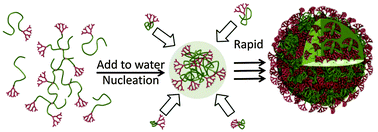Role of highly branched, high molecular weight polymer structures in directing uniform polymer particle formation during nanoprecipitation†
Abstract
The new macromolecular architecture, hyperbranched polydendrons, are composed of a broad distribution of molecular weights and architectural variation; however, nanoprecipitation of these materials yields highly uniform, dendron-functional nanoparticles. By isolating different fractions of the diverse samples, the key role of the most highly branched structures in directing nucleation and growth has been explored and determined.



 Please wait while we load your content...
Please wait while we load your content...